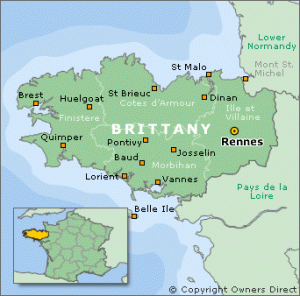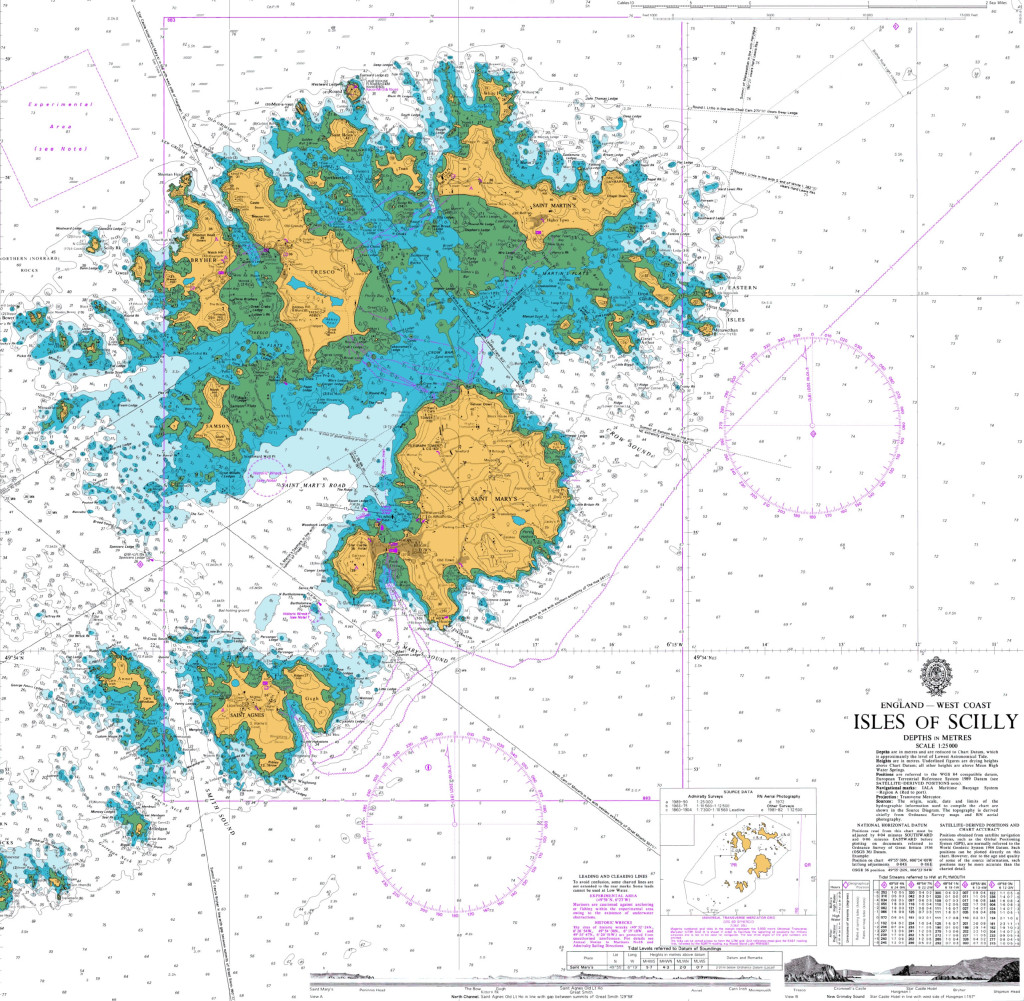Ys
Bretons *
The Bretons are a cultural grouping located in Brittany in northwest France, where the most outstanding megalithic monuments of Europe are situated. Today, the Bretons consider themselves a separate Celtic  people, with a strong nationalist movement(c).
people, with a strong nationalist movement(c).
It was in 1839 that the Rev. Algernon Herbert (1792-1855), Dean of Merton College, Oxford, was the first to use the term ‘megalithic’ in a paper describing the monuments of England and Brittany.
Since the middle of the 19th century a number of commentators right up to the present have labelled the Bretons as Atlantean. These include R. Cedric Leonard(a), who In support of this idea cites both Stephen Oppenheimer and Herodotus, although he does so some reservations. Hank Harrison wrote Finding Atlantis in which, he supported the idea of a megalithic Atlantis with its centre of power probably located in the Morbihan area of Brittany.
In the 19th century, Ignatius Donnelly quoted Eugene Bodichon as expressing a similar view[021.389]. Bodichon’s opinion is simply based on the temperament and physical similarities between the Bretons and the Berbers of North Africa. Similarly, Gerry Forster refers to Bodichon’s opinion in his The Lost Continent Rediscovered(b). I do not think that the case is proven, even if the legendary kingdom of Ys, reputedly off the Brittany coast, is brought into the debate.
(a) See: https://web.archive.org/web/20170113172907/https://www.atlantisquest.com/Bretons.html
(b) Gerry Forster (archive.org) *
(c) https://ansionnachfionn.com/2011/08/18/at-home-amongst-the-bretons/
Armorica
Armorica was the Latin name given by the Romans to what we know today as the Brittany peninsula. The region contains some of the most remarkable monuments created by the megalith builders, such as those found at Carnac and Morbihan,
 Plato described the influence of Atlantis reaching as far as Italy and Libya (Tim. 25b). In Europe megalithic structures have been found extending all along the Atlantic seaboard and into the Mediterranean as far east as Italy(a) and all across North Africa including modern Libya and Egypt, it was understandable when some commentators concluded that these megalithic monuments were a cultural expression of the Atlanteans. The evidence available indicates that the spread of megalithic building was effected by a maritime based society. How much of this spread was brought about through military or trade expansion or just migration is not known.
Plato described the influence of Atlantis reaching as far as Italy and Libya (Tim. 25b). In Europe megalithic structures have been found extending all along the Atlantic seaboard and into the Mediterranean as far east as Italy(a) and all across North Africa including modern Libya and Egypt, it was understandable when some commentators concluded that these megalithic monuments were a cultural expression of the Atlanteans. The evidence available indicates that the spread of megalithic building was effected by a maritime based society. How much of this spread was brought about through military or trade expansion or just migration is not known.
A number of French and German researchers have identified Brittany as the power centre of the Atlantean ‘confederation’, while the American writer Hank Harrison is working on a book in which he will nominate Morbihan as a possible capital of Atlantis. R. Cedric Leonard has also written an interesting article(b) on the megalithic monuments of Brittany.
While megaliths are also found in the Middle East and across Asia as far as Japan, their greatest concentration is in Western Europe with a suggested focal point in Armorica. The legendary sunken city of Ys, often associated with Atlantis, is reputedly located off the coast of Armorica.
(a) https://commons.wikimedia.org/wiki/Category:Megaliths_in_Italy
*(b) https://web.archive.org/web/20170113112315/https://www.atlantisquest.com/Carnac.html*
.
Scilly Isles
The Scilly Isles are located southwest of Cornwall’s Land’s End in the Atlantic Ocean. The islands were more extensive before the end of the last Ice Age and their inundation following the melting of the glaciers undoubtedly produced numerous legends in the region of sunken cities and lost civilisations. Apparently, there was once a paved causeway joining some of the islands and according to an 18th-century report, it was then under 8 feet of water. Even earlier in the 3rd century AD, Solinus referred to the Scillies in the singular as insulam Siluram.
O.G.S. Crawford, who was the first Archaeology Officer with the British Ordnance Survey, was also the founder in 1927 of Antiquity which continues today. In its first edition(c) he wrote of the earlier Scillies as a single landmass and its relationship to the legend of Lyonesse(b).
 Some writers have identified the Scillies as the Cassiterides (Isles of Tin) referred to by Pliny the Elder. However, there are no known tin deposits on the islands, although it is possible that before the ocean levels rose ore deposits were accessible, similar to those in nearby Devon and Cornwall, but this inundation probably occurred before the technology existed to exploit its use.
Some writers have identified the Scillies as the Cassiterides (Isles of Tin) referred to by Pliny the Elder. However, there are no known tin deposits on the islands, although it is possible that before the ocean levels rose ore deposits were accessible, similar to those in nearby Devon and Cornwall, but this inundation probably occurred before the technology existed to exploit its use.
A popular view is that the mythical sunken land of Lyonesse was situated between the Scillies and Land’s End in Cornwall. This is often seen as a parallel with the Breton legend of Ys.
In more recent times the Russian Scientist Viatcheslav Koudriavtsev was convinced that Atlantis was located on the Celtic Shelf near the Scilly Isles. He specifically identified an underwater feature known as the Little Sole Bank, whose highest point is just 75 metres beneath the ocean’s surface. He had been promoting his theory since 1995 and eventually obtained official government permission to carry out explorations in the area, but he was unable to raise the necessary funds to carry out the operation.
In 2009, excavations on St. Agnes in the Scillies revealed a remarkable Bronze Age pottery sherd which seems to depict the earliest know image of a sailing boat ever found in the United Kingdom(a).
In 1651, the Netherlands declared war on the Scillies, a little detail that was forgotten until 1986, when a peace treaty was finally signed(d) !
(c) https://www.cambridge.org/core/journals/antiquity/article/lyonesse/37725F1992B3D4ADF36561E144227F11 (Jan. 2019 access restricted)
(d) https://en.wikipedia.org/wiki/Three_Hundred_and_Thirty_Five_Years%27_War
